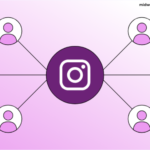The healthcare industry is in the midst of a technological revolution. With new advances in technology, the future of healthcare looks brighter than ever. We will discuss some of the latest trends and innovations in healthcare technology. We will explore advances in cloud technology, automation and artificial intelligence, healthcare wearables and mobile apps, and innovative solutions with virtual reality. We will also discuss the importance of cybersecurity in protecting data and systems. By understanding the current trends and innovations in healthcare technology, healthcare organizations can better prepare for the changes to come and take advantage of the opportunities they will bring.
Adoption of Cloud Technology in Healthcare
Cloud technology is increasingly being adopted in the healthcare industry. Cloud technology provides healthcare organizations with a secure and reliable platform on which to store and access data. It can also improve the efficiency of healthcare operations by enabling healthcare providers to access patient records, medical images, and other data from any device with an internet connection. Cloud technology can also be used to provide remote patient care, streamline patient billing, and facilitate telemedicine.
Automation and Artificial Intelligence in Healthcare
Automation and artificial intelligence are transforming the healthcare industry in significant ways. Automation can be used to reduce time-consuming processes and help healthcare staff focus on more important tasks. Artificial intelligence can be used to analyze patient data and identify trends, improve diagnosis accuracy, and help healthcare staff make more informed decisions. AI can also be used to automate administrative tasks, such as scheduling appointments and processing medical insurance claims.
Healthcare Wearables and Mobile Apps
Healthcare wearables and mobile apps are becoming more popular with patients. Wearables, such as smartwatches and fitness trackers, can be used to monitor health and fitness data, such as heart rate and steps taken. Mobile apps can be used to access healthcare information, manage chronic conditions, and even provide virtual medical consultations. Wearables and mobile apps can also help patients stay connected with their healthcare providers, giving them access to real-time health data and the ability to communicate with their providers from anywhere.
Innovative Solutions with Virtual Reality
Virtual reality is being used to create innovative solutions in healthcare. Virtual reality can be used to create immersive training environments for medical students and healthcare professionals. It can also be used to provide virtual medical consultations and help healthcare providers better understand a patient’s condition. Virtual reality can also be used to help patients manage chronic conditions and provide mental health support.
Cybersecurity: Protecting Data and Systems
As healthcare organizations adopt new technologies, they must also ensure that their data and systems are secure. Cybersecurity is essential to protect sensitive patient data and keep medical records safe. Healthcare organizations must invest in solutions that can detect and prevent cyberattacks, and they must also develop policies and procedures to protect data and systems.
Conclusion
The healthcare industry is undergoing a technological revolution. Cloud technology, automation and artificial intelligence, healthcare wearables and mobile apps, and innovative solutions with virtual reality are all transforming the industry. Cybersecurity is also essential to protect data and systems. By understanding the current trends and innovations in healthcare technology, healthcare organizations can better prepare for the changes to come and take advantage of the opportunities they will bring.









